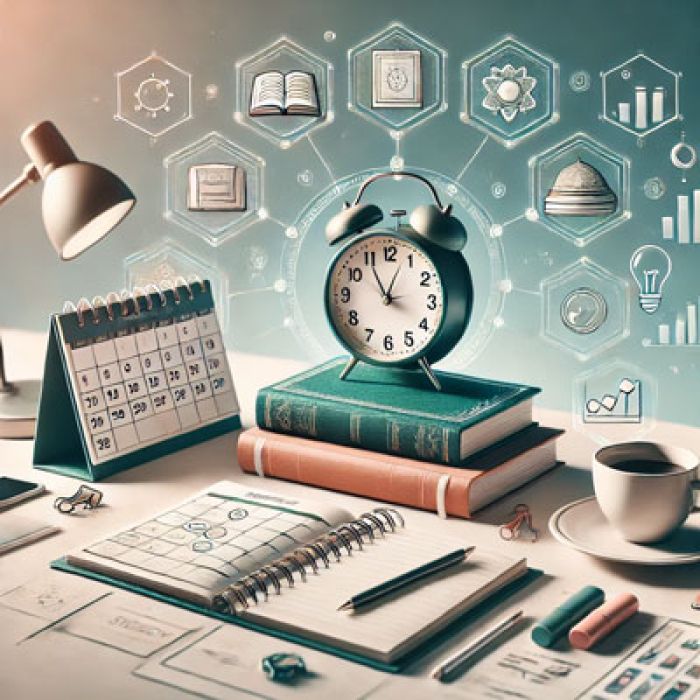
Another important challenge to learning the Quran is in relation to the differing effective teaching methods, which are requisite for each age group. Children possess various learning characteristics, compared to adults, ranging from comprehension to motivation and explanations. This article discusses the basic differences between children and adults in learning the Quran and, from that, shows how teachers and parents should use these differences to their advantage for the best educational process.
Fundamentals of Children's Learning
Teaching children is one of the necessary tasks involved in shaping their personality and enhancing their future. For children, learning does not signify only academic achievements but also developing mental, emotional, and social capacities. In this regard, we discuss some basics that help children learn effectively:
-
Play and Learn:Play is not an absolute medium of entertainment but a potent pedagogic methodology that helps in the mental, physical, and social development of a child. Building games, much like puzzles, enhance a child's critical thinking and problem-solving abilities.
-
Effective Communication: Teaching children the art of effective communication, especially in aspects like active listening and articulation of ideas, helps in developing their social relationship and learning from others.
-
Early Reading: Exposing the child early to books enhances his language skills, building comprehension and abilities. Colorful children's books with illustrated stories attract children and light up an interest in exploration.
-
Positive Reinforcement: Praise and encouragement, since children are naturally curious learners, and they should feel that learning is a fun-filled experience.
-
Appropriate Learning Environment: A calm and stimulating environment for learning, with necessary materials like books, art supplies, and space for playing, helps the children in focus and creativity.
It is not just the teachers and their schools that are responsible for education, but it's also the shared family and community responsibility. Love, support, and guidance given to a child while he is pursuing his educational journey develop overall personality in him capable of positive interaction with the surroundings.
Emotional and Cognitive Reactions in Children
Perceiving emotional and cognitive responses in children is a strategy toward developing educational and parenting methods to meet the developmental needs of children. A few points will help in understanding these responses:
-
Self-Recognition of Emotions: Children learn to express their emotions through experience and observation. Teaching a child about self-recognition of his/her own emotions, as well as others, helps the development of emotional intelligence, an ability which positively influences the social interaction of a child.
-
Curiosity and Exploration: Man is by nature curious, and due to this curiosity, a child goes about exploring the world. Encouraging this curiosity strengthens their cognitive development and enhances original learning.
-
Learning from Experiences: Children learn through trial and error, and responding to these experiences will teach them how to handle different situations in the future. Providing a safe environment wherein they can experiment without the fear of failure gives room for mental growth.
-
Emotional Stimulation: A child needs to be made to feel safe and confident. Positive relationships with their parents and teachers will instill in them the emotional support necessary for both emotional and cognitive development.
-
Adapting to Changes: Children face constant changes as they grow, like entrance into schools or moving to a new house. A child's ability to maintain this learning process or to adapt these experiences depends on his emotional and cognitive capacities to understand such change.
It is through such upbringing and education that enhanced aspects of bringing up children will build a conscious, balanced generation that can meet challenges confidently and effectively.
Games and Activities as Learning Tools for Kids
Games and activities not only provide entertainment for children but are also a much-needed educational tool for developing their mental, physical, and social abilities. Here's how games and activities can be effectively integrated into education:
-
Learning Games: These are those games, which involve learning through figures, alphabets, colors and shapes. Such play helps the child to learn the basic concepts in a playful way. The puzzle and block games enhance problem-solving skills and critical thinking.
-
Dramatic play: This activity offers children an outlet for playing out a variety of roles, thereby developing an understanding toward different perspectives and enhancing the ability to feel sympathy and communicate better.
-
Physical Activities: Sports, outdoor games, etc., develop the motor skills of children and their hand-eye coordination. These also inculcate a feeling in children towards health and fitness.
-
Arts and Craft Work: Allow children to develop their imagination by drawing, molding, cutting, and pasting. This will enhance creativeness, and improve fine motor skills with precision.
-
Electronic Games: Video games, in the computer age, offer great opportunities for learning interaction at each child's level. Those games that include educational challenges enhance strategic thinking and logic.
-
Social Activities: The cooperative games develop children's interacting skills, and through these games, they learn to improve their social skills. Hide and seek or musical chairs teach them patience, following rules, and waiting.
Educational games and activities are an investment in the future of children. They develop children's abilities, making their educative course more interesting and fun. By playing, they have the opportunity to learn main features helpful while facing any problem in life confidently and efficiently.
Adult Education Techniques
It requires different strategies and techniques from children's education, suiting their life experiences and professional background, as well as needs. There are effective techniques for adult education that include:
-
Problem-Based Learning: It takes real-life problems as the starting point of one's learning. This helps adult learners draw from past experiences in solving problems and to practically apply what is learned.
-
Self-Directed Learning: Adults are, to a great extent, independent in their learning. Resources and tools put at one's disposal to enable self-directed exploration of topics enhance the efficiency of the learning experience.
-
Collaborative learning: This is whereby learners are to run in small groups to discuss topics, resolve problems, or do projects. This is essential in building social skills as well as sharing experiences from different learners.
-
Blended Learning: A learning methodology that combines face-to-face and online education. This method gives more flexibility to learning and uses technological tools to support education.
-
Hands-on Training and Simulation: Opportunities to practice or simulate allow adults to connect theoretical information to real-life applications. It is a very effective means of learning a technical or professional skill.
-
Self-Assessment and Critical Thinking: Helping adults to self-assess their learning and putting them in a position to think critically increases their independence during the learning process and makes them consciously aware of their strengths and weaknesses.
-
Relate to Life Experiences: Adults have life and work experiences that can be tapped as learning resources. This therefore implies that educational material can be related to experiences to enhance understanding and information retention.
Adult learning would, therefore, require a deep understanding of the intellectual maturity that they bring along with specific needs into the learning environment. Applied techniques should be varied to make education more effective and fitting with their characteristics.
Choosing the Right Educational Method for Each Age Group
Choosing the right learning method for each age group is possible by understanding the developmental, cognitive, and social features of each stage. Guidelines follow to enable teachers to choose the best ways to teach according to age groups:
Preschoolers (3-5 years):
-
Use games, interactive activities to encourage play and discovery.
-
Focus on basic teaching: colors, numbers, and letters—basic fun things that are presented in a fun and visual manner.
-
Add in stories, songs, and rhymes to the language and listening activities.
Elementary School Children (6-12 years):
-
Encourage learner participation and project-based learning to discover new concepts.
-
Use educational tools such as videos and models to explain scientific and mathematical concepts.
-
Develop critical thinking skills through group work and problem-solving.
Teenagers: 13-18 years:
-
Implement more complex concepts that require deeper thinking and analysis.
-
Encourage research and independent projects that demand more autonomy in learning.
-
Use effectively technology, including educational software and online platforms, to enhance learning.
Adults (19 years and older):
-
Focus on vocational education and life skills that will help improve oneself to be employable and foster personal development.
-
Conduct seminars, workshops, and practice with cases to provide real and practical experiences.
-
Encourage independent learning and continuous further education with the aid of online resources and courses.
General Tips for All Age Groups:
-
Flexibility in teaching methods: Enact different approaches to teaching based on the class's and students' progress.
-
Continuous Assessment: In the assessment, find out the effectiveness of the teaching modes and modify them according to the outcome.
-
Effective communication: The teacher effectively communicates with the students, and vice versa, for smooth information flow in class to promote a positive learning environment.
By applying these guidelines, it would ensure better quality education and suitable stimulating educational experience for a particular age category for the teacher or educator.
Educational Toys for Children and Adults
In the educational arena, several tools have been made available to try to improve learning in children and adults. The following are some of the handy tools that can be utilized to promote education among people of all ages:
For Children:
-
Some educational applications: among them ABCmouse, Endless Alphabet, and Duolingo Kids, provide interactive, entertaining learning experiences that capture the attention of young children and induce interest in learning.
-
Educational Video Games: All games like Math Blaster or Reader Rabbit, or even developed by LeapFrog, also help a lot in teaching the basics of reading and mathematical skills to children in an interactive way.
-
Visual Aids: Videos and educational shows on Khan Academy Kids or YouTube Kids enable the delivery of information in ways that make it more understandable and engaging.
-
Story and Picture Books: Apps such as Epic! host a very large collection of picture books and stories that are recommended for children, thus making reading and listening easier.
For Adults:
-
MOOCs: Coursera, Udemy, and LinkedIn Learning are a few of the online course platforms that offer courses covering a wide range of professional and personal fields to help adults enhance or gain new skills.
-
Digital collaboration tools: like Google Workspace and Microsoft Teams—are there to serve collaboration and communication between students and teachers during both formally and informally organized education.
-
Educational Software and Simulations: Programs like Rosetta Stone, used for learning new languages, and Mavis Beacon Teaches Typing for teaching typing, do have practical exercises to pick up certain skills.
-
Specialized Apps: Such applications, including Quizlet and Anki, work to reinforce memory and work on test preparation by using smart flashcards and interactive games.
-
Webinars and online seminars: One is supplied with an advantage of attending webinars and online seminars that a university or any other kind of educational institution runs to empower them to continue learning and broaden horizons.
These tools thus can make education interactive and, hence, engisting for both children and adults to learn effectively and personally.




